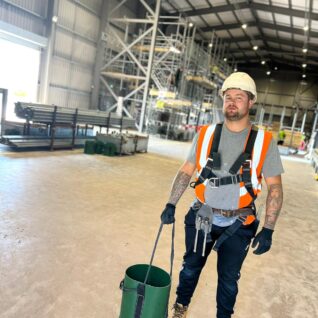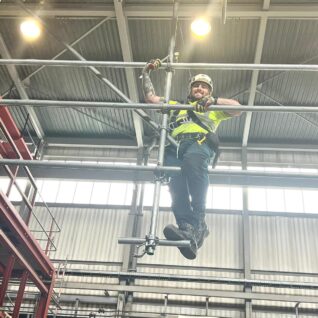Lisa Webster is a mechanical engineer who recently attended a Basic Scaffold Inspection course, and the insights she gained have proven to be game-changers in her work. Despite not being a scaffolder herself, the training opened her eyes to the critical role scaffolding plays in ensuring worker safety and project efficiency across construction and industrial settings.
What is your background?
I am a qualified mechanical engineer and started as a design engineer designing ‘mechanical’ aspects of the civil industry. I began managing installations, and projects from start to finish and now I am involved in the planning through to completion of projects.
What motivated you to enrol on a Basic Scaffold Inspection course at SIMIAN?
My employer put me forward for the course to further my learning and development and I was keen to attend as a scaffold has been and will always be to some degree a method of access I need to use.
How do you envision applying the knowledge and skills gained from the BSI course to your work?
As I have a responsibility to ensure the site is managed effectively and safely it’s invaluable to have an understanding of all aspects. Whilst the majority of the scaffolds I work with are designed scaffolds, it’s good to have the knowledge and understanding – especially as every job is different and in the future, I may be required to inspect a basic scaffold.
Whilst I won’t be inspecting advanced scaffolds, the knowledge I have gained will allow me to do a visual check on-site for my extra understanding.
Did you inspect a scaffold before and how did you find inspecting someone else scaffold during the course?
I have always visually inspected scaffolds within my capability looking for any evidence of trespass, vandalism or weather damage and suitably reported it to the scaffold company. I’ve had scaffold drawings to refer to however an advanced scaffolder would usually undertake the inspection. The course was interesting, after gaining knowledge of what to look for and an appreciation that with such a lot of kit it’s important to build as required and check.
In your opinion, what are the most valuable takeaways you have gained from the SIMIAN training course?
It has been very beneficial to understand all aspects of the scaffold from parts used, what to look out for and the parameters of where and why a basic scaffold stops and becomes an advanced scaffold design. It has also been invaluable being taught by someone with such vast experience in the trade who can refer to past experiences and highlight changes made through personal experiences.
Would you recommend a course at SIMIAN?
I would recommend SIMIAN as it is invaluable to be taught by someone with a vast experience of the trade and the content is very engaging, I have gained a good understanding of various scaffold systems and an in-depth appreciation of how these comply with current standards.
I now have more confidence in my knowledge of inspecting basic scaffolds.
Whether you’re an engineer, project manager, safety coordinator, or simply someone passionate about workplace safety, Lisa’s story serves as a compelling reminder that basic scaffold inspection training can be a valuable investment for professionals across diverse fields.




